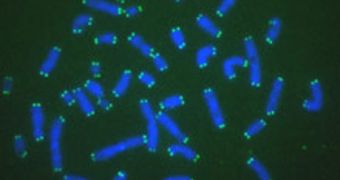Premature aging is one of the most difficult-to-deal with conditions in the world. In addition to its physical consequences, its psychological impact is devastating on a person suffering from it. At this point, experts believe that the disease is caused by the fact that people predisposed to it have very short telomeres, which are repetitive stretches of DNA attached to the end of each chromosome in each cell featuring genetic material in the human body. As chromosomes multiply, the telomeres naturally get shorter, and scientists believe that this may be playing a role in aging.
They also believe that people who are born with shorter-than-average telomeres are at a higher risk of getting older faster, or suffering from premature aging. Now, a group of scientists believes it may have discovered a new method of reverting the effects of the devastating disease, at least as far as skin cells go. They argue that, by treating them with stem cells, these cells can be reverted to a more embryonic state. While this happens, they reveal, the cells also appear to shed the molecular defect that led to them prematurely age in the first place.
The members of the team behind the new research, which is based at the Children's Hospital Boston, says that they've used induced pluripotent stem cell (iPSC) technology on adult skin cells, so as to revert them to their initial, undifferentiated state. This course of treatment was apparently extremely efficient at increasing the length of the telomeres in the newly-obtained cells. If the disease is indeed caused by these small DNA strands, then it should not revert once the skin cells have been replaced with newer version, scientists believe. Details of the work appear in the February 18 online issue of the esteemed scientific journal Nature, Technology Review reports.
The scientists add that this work was built on a number of other investigations, which showed that, when the activity of the telomerase enzyme is enhanced, the effects of premature aging disease loosen on a patient. In addition to its immediate applications in handling this terrible disorder, the new investigation could also be used as a potent new tool for other types of telomerase studies as well. The group is currently working on determining whether applying the same iPSC method works on cells with damaged telomerase.

 14 DAY TRIAL //
14 DAY TRIAL //